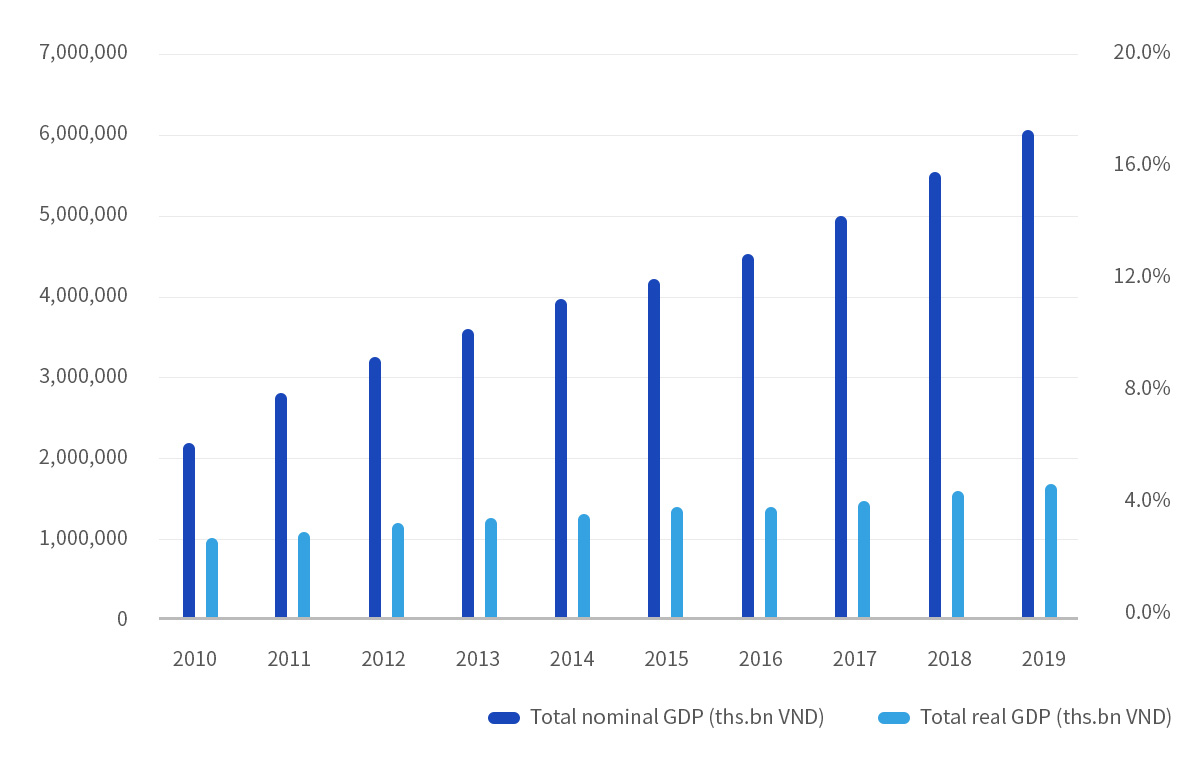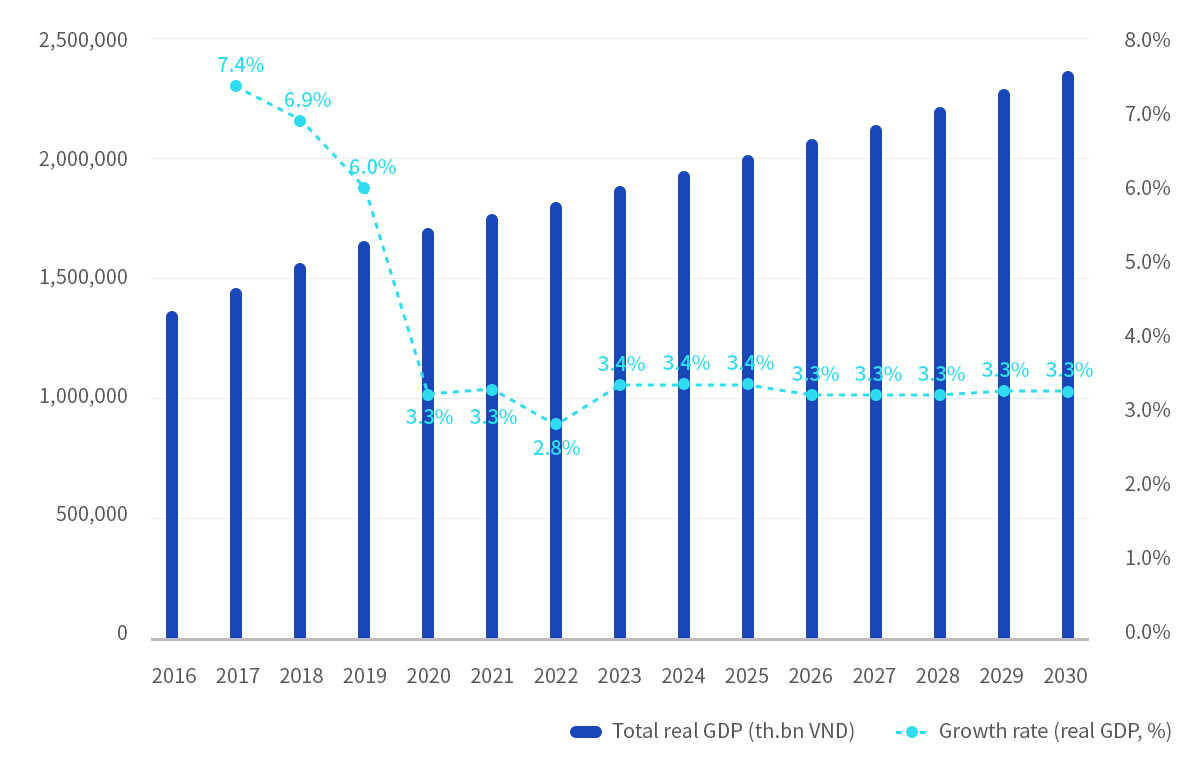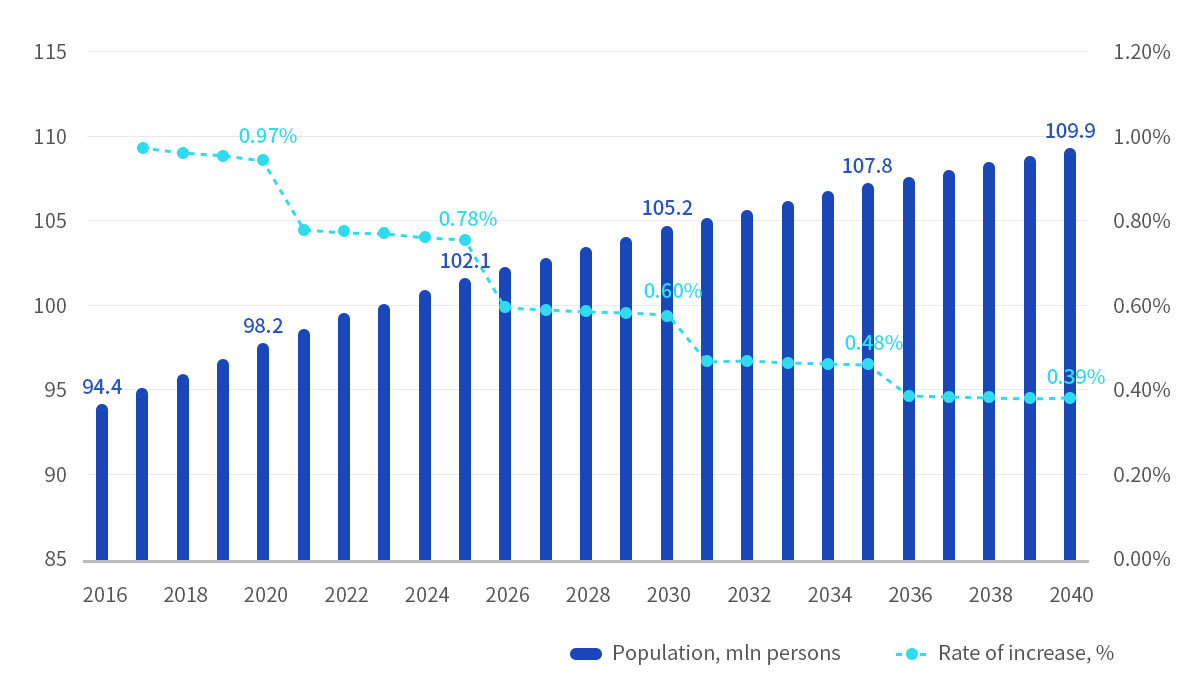Statistics of Vietnam
Socioeconomic Index
Socioeconomic Index
1. Major Socioeconomic Indicators in Vietnam
Vietnam Overview
| Declare independence from France |
2 September 1945 |
|---|---|
| Capital |
Hanoi |
| Population |
96.5 mln. persons |
| 1st level cities belong the central |
Population – 21,543 thous. persons. (22.3% of the total population)
|
| Area |
331 thous. km2 |
| Population density |
292 person/km2 |
| Currency |
Dong (VND) |
Vietnam is located in the South-East Asia. The total area of the country is around 331,000 km2, population is over 96.5 mln. people.
2. GDP
Vietnam’s GDP Growth in the period of 2010-2019

In the period 2010-2019, real GDP grew by 69% from VND982 ths.bn to VND1,162 ths.bn. The average growth rate of real GDP in 2010-2019 was 6.0%.
Vietnam real GDP forecast

According to the United Nations, Haver Analytics and the revised PDP VII in 2016, national nominal GDP was forecast to grow at 7% per annum in 2016-2030, from VND 4503 ths.bn in 2016 to reach VND 12,707 ths.bn in 2030). Considering the inflation rates expected in 2016-2030, real GDP is expected to grow by 8.2% from VND1,365 th.bn to VND2,368 th.bn in that period.
3. Demographics
Vietnam population forecast

Vietnam’s population increased by 9.8% in the period 2010-2019. According to the United Nations, Vietnam’s population is forecast to reach 109.9 mln in 2040 (+13,9% compared to 2019)


